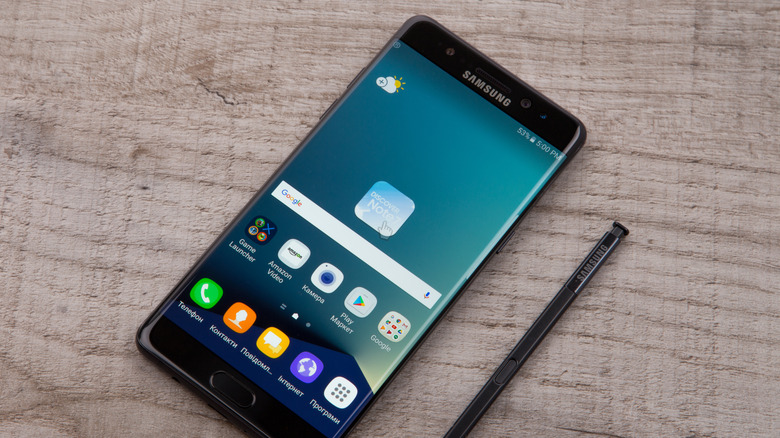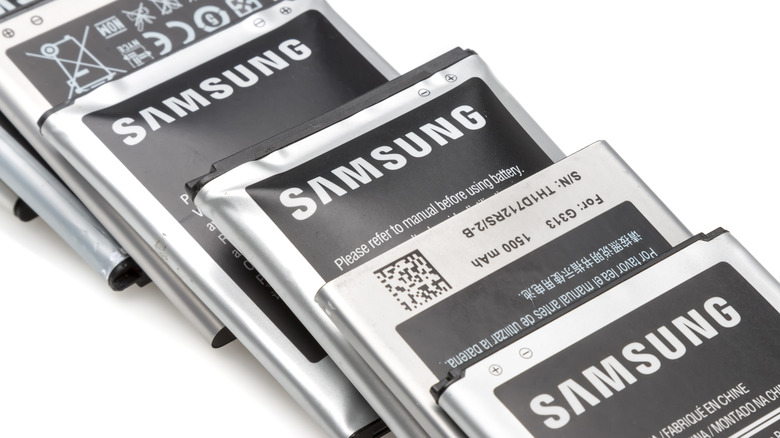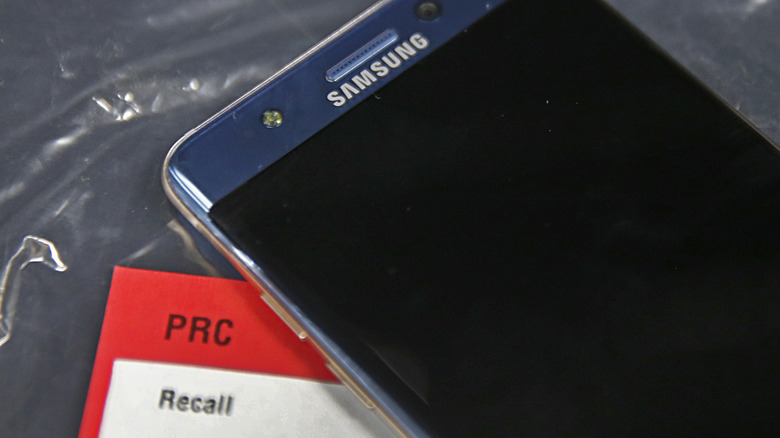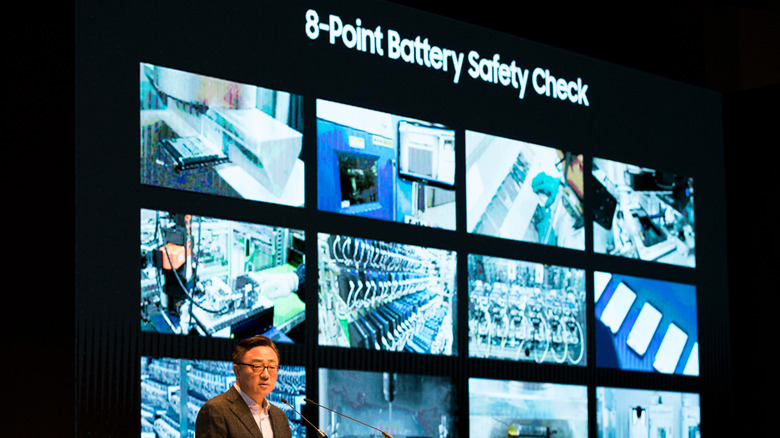Why One Of Samsung's Best Phones Was Banned In America
We've heard of video games and films being restricted in certain regions due to controversial content that doesn't align with certain countries' values, but rarely does a piece of technology get a full-blown ban hammer. The few prior instances it has happened were either temporary or due to reasons that are politically charged, such as when Huawei drew heat from the western telecoms industry and the American government for fear of Chinese spyware.
Then there's the Samsung Galaxy Note 7, a case unlike any other. This smartphone hit the market in August 2016 to much anticipation and rave reviews – many considered it the best smartphone at the time – but by month's end, it was swiftly and universally banned.
The original product never returned to store shelves after that initial shock, and it was months later that we'd see a somewhat less exciting replacement – but by then, the newest smartphones on deck had already supplanted it. How could such a beloved inanimate object be exiled so heavily?
How Samsung's lithium-charged nightmare started
You may remember that shortly after launch, reports surfaced that suggested some Samsung Galaxy Note 7 units were getting far too hot for comfort. Some devices melted from the inside out, caught fire, swelled, and outright exploded. It's not uncommon to hear cases like this for any smartphone, but they're usually isolated incidents, and we hear about them most often because those with the biggest issues tend to shout the loudest.
Samsung's initial estimate counted 24 out of every 1 million devices affected, or 0.0024%, to be exact. That sounds extremely low, but the 35 reports that initially raised the alarm all flowed in around the same time, suggesting the problem could have been more widespread than a simple extrapolation equation would let on.
Samsung originally chalked it up to a bad batch of one subset of the batteries it used inside the phone and started offering exchanges for units from a different production run, but even more scary reports started surfacing across social media, suggesting a much bigger issue was brewing.
Basically, a ticking time bomb
While many Galaxy Note 7 units weren't immediately affected, public health officials didn't want to mess around. The US Department of Transportation saw fit to ban its presence from all flights, and Samsung itself halted sales while carrying out its own investigation.
The South Korean electronics giant prompted those who bought the Note 7 before the alarm sounded to return or exchange their devices ASAP, but many held out on the recall believing that they were in the clear, as they'd never noticed their unit getting hot. A round of mass media shaming preceded Samsung's own internal plea, with some company figureheads practically begging folks to relinquish their beloved smartphones, all in the name of personal and public safety.
Wireless providers followed suit, with nearly all of them offering some sort of hassle-free return or exchange program. Some outright blocked the Note 7 from accessing their networks, and by way of a mandatory software update, Samsung prevented the battery from charging past 60%, both tactics which proved effective in forcing the issue.
The aftermath of the Galaxy Note 7 debacle
Once the dust settled, Samsung lost more than $1 billion in research and development costs, as well as production, distribution, and recollection expenses. It also had to spend a good chunk of marketing money to spread the word on this issue, alongside instilling goodwill that it hadn't suddenly lost its ability to make safe products. After all, this is the sort of recall that could completely tank consumer confidence. It started with a media campaign outlining its new 8-point battery safety check, among other measures.
Samsung had less than a year to reprove its trustworthiness with the impending Galaxy S8 launch which, thankfully, went off without a hitch. Industry spectators and consumers approached it with caution, but those fears gradually faded, and Samsung as a company eventually survived what could be considered one of the biggest product launch disasters in modern history.
This troubling saga brought with it a silver lining: smartphone manufacturers have become much more stringent about quality control issues. There aren't many companies that can survive a massive, billion-dollar global recall the way Samsung did, so most are doing everything in their power to prevent it. Sadly, the same couldn't be said for every industry.



